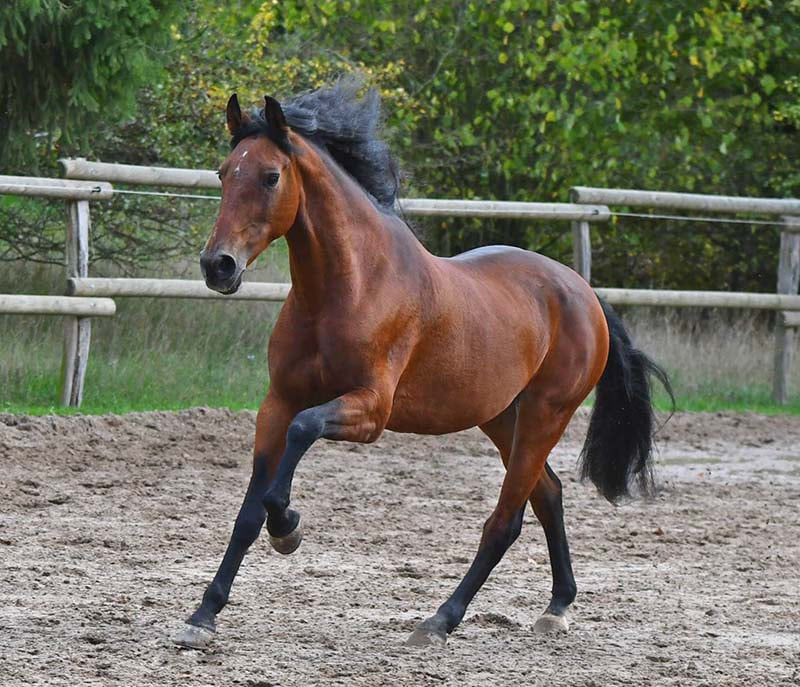Does your horse consistently pull its head back behind the vertical? Do you struggle with a horse who doesn’t understand how to move forward through its topline? In this blog, we are sharing what this means, how you can identify it and 5 tips you can try to stop your horse from coming behind the vertical.
What does mean to work behind the vertical?
A horse working behind the vertical means that its nose is near to its chest and there’s a lot of tension across his poll.
How can you identify if your horse is behind the vertical?
You can start looking out for your horse’s ears. If they are lower than the crest of its neck, probably your horse is working behind the vertical, it can be tricky but you can identify that. Check out the video below from JC Horse Training to learn more about hot to tell if your horse is behind the vertical.
How to Stop Your Horse Coming Behind the Vertical
Horses tend to come behind the vertical as a way to avoid equipment or discomfort, from a lack of training, or because they are under-muscled.
Here we will cover how to encourage them to pull forward through their poll, starting with the equipment you use.
Clear Communication through Equipment
As you’re asking your horse to bring his head forward and through the vertical, you want to be sure you are communicating clearly! A horse that is pulling back may be shying away from pain or discomfort. We always recommend lunging on a cavesson.
Not only is this a safer way to lunge, but it also encourages your horse to move from the tip of its nose. This fully engages the head and neck muscles and allows for a more thorough bend.
Using only a halter or a bridle clipped to one side may be the reason your horse isn’t lifting their head forward.
Once you’ve got the right equipment, then you want to build the muscle.
Engage the Hind End
Horses that have a tendency to pull their head and neck back behind the vertical, often don’t fully engage their hind end and back muscles. This could be due to age, training, muscle mass, or another reason.
If you see this happening with your horse, here are a couple of ways you can engage your horse’s hind end:
- Add in Pole Work: Place 2-3 trot poles on your horse’s circle, at least 7 feet apart. Be sure that your pole placement isn’t disruptive to your horse’s rhythm.
- Use Hills: Asking your horse to walk, trot, and canter up and down a hill will engage the use of their hindquarters and hocks. Be sure to start slow and not overuse this for your horse. If you’re just starting out, only walk until you feel your horse is fit enough to move to the next gait.
Praise
After you’ve changed your equipment, you may see a horse that is responsive and willing to stretch its head and neck! As soon as you see that improvement, in any area of your training, it is essential to praise your horse. Some horses with a tendency to pull back have confidence issues as well.
Praising your horse for the behavior you want not only encourages that behavior in the future but gives your horse a guide on what to do, therefore building their confidence on the lunge line.
The opposite of this is to punish your horse when they suck its head back. Aversive equipment is often the reason for this so adding in punishing behavior will only make this issue worse.

Don’t Rush
As you’re working through this complicated issue with your horse, remember that learning this behavior will take time! One step backwards isn’t a failure and you should keep working through this, one lunging session at a time. Give your horse time to learn their new way of going and to build the muscle they need to maintain it.
It’s important to plan out your sessions so that you aren’t feeling stuck and unmotivated.
Plan it Out
Use your lunging training plan to set goals, track progress, and celebrate wins! As you’re working through this issue with your horse, start by thinking about where you want to be in a few weeks. How about a month? 6 months?
Setting these goals ahead of time gives you a light at the end of the tunnel that you can look towards.
Be sure to also plan what will happen if something doesn’t go the way that you hoped or if you need to take longer in a certain area. Your lunging training plan should be flexible and easily changed
👉🏼 Want to learn more? We cover this and more in our self-study course: The Art of Lunging!
